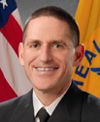HIV Impact on Gay and Bisexual Men: The 4th Decade
Topics

Today is National Gay Men’s HIV/AIDS Awareness Day (NGMHAAD), an observance that reminds us that HIV continues to take a heavy toll on gay and bisexual men across the United States. Even after more than 30 years of AIDS, this community remains at the center of the U.S. epidemic.
Men who have sex with men (MSM) represent 2% of the U.S. population but more than 60% of new infections and half of all Americans living with HIV. Rates of new HIV diagnoses among MSM in the United States are more than 44 times that of other men. Especially at risk are young MSM (ages 13-24 years), the only risk group where new infections are increasing, with a 22% increase in recent years. Young Black MSM are most affected accounting for 55% of new infections among YMSM overall.
Since 2010 and the White House release of the National HIV/AIDS Strategy (NHAS) followed by the implementation plan, we have continued to follow the road map to reduce new HIV infections, increase access to care, improve health outcomes for persons living with HIV, and address HIV-related health disparities. Last week, senior leaders from across HHS agencies, including CDC, took part in a public meeting to review progress toward achieving the goals of NHAS. There is much good news.
At the Centers for Disease Control and Prevention (CDC), we play a role in these efforts to help maximize the effectiveness of current HIV prevention methods through a High-Impact Prevention approach. This public health approach ensures resources are directed to activities that will have the greatest impact on reducing HIV among gay and bisexual men and other populations, as well as reaching people living with HIV and their partners.
To make a meaningful impact on this epidemic, the gay community must re-engage in the fight on behalf of a new generation. In the early days of HIV, the community led efforts to drive down new infections resulted in dramatic declines in risk behavior and an increase in condom use, but that momentum has not been sustained over time.
Gay and bisexual men should be empowered with information to understand their risk and how to protect themselves. This includes helping young MSM to seek testing and other services without fear of discrimination. We should not stop at awareness, but take action to reach all MSM, especially young MSM, with HIV education, testing and proven prevention strategies. We cannot afford to lose a new generation to this preventable infection. Each of us has the power to make a difference – every person and every action counts.
On this National Gay Men’s HIV/AIDS Awareness Day, take action, make a difference. If you are leading and/or implementing HIV prevention programs, learn more about CDC’s new HIV testing strategy for gay couples—Couples HIV Testing and Counseling that will provide gay couples the opportunity to seek HIV testing together; increase communication and agreements among gay couples; and encourage gay men to adopt healthier and safer behaviors. If you are hosting NGMHAAD events, educate your HIV-negative clients at high risk about the availability of pre-exposure prophylaxis, or PrEP, and other prevention options to help reduce the risk of getting HIV.
Finally, inform your friends and family about HIV; share this blog with or write an entry for your own blog. On Twitter, let your followers know that today is NGMHAAD and how it is important that we all get involved. Like Act Against AIDS Exit Disclaimer
and HIV.govExit Disclaimer on Facebook and share news that is of interest to you. And, on Twitter, I welcome you to follow @DrMerminCDCExit Disclaimer and @CDC_HIVAIDSExit Disclaimer to learn more about HIV from CDC.
Let’s all take action today and every day to help stop HIV. Thank you for your ongoing commitment to end this disease.
Editor’s Note: Please visit the HIV Testing and Care Services Locator to find an HIV testing location near you.